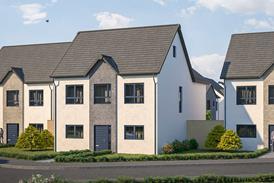Economic and political impacts remain somewhat uncertain - the economies of Portugal, Ireland and Spain are on the up, while BRICS nations are stalling.

One prediction was that Donald Trump’s bid for White House glory would be cut short, but let’s see what happens here in light of recent events. And what of the EU referendum and a possible Brexit?
High rent and rates will also play a key part. Soaring costs in much of London mean that occupiers will search further afield for more cost-effective accommodation.
Croydon, Brent Cross and Silvertown will of course attract attention, but the hunt will also take place in the north of the UK, where Leeds and Manchester, and Edinburgh and Glasgow, for instance, offer what many occupiers see as strategic opportunities with far reduced overheads.
Cost savings are long-term windfalls for occupiers, especially those who are consolidating perhaps due to mergers and acquisitions. That all-important choice of location isn’t only driven by cost, though; we’re noticing that large companies are keen to be sited near tech hubs.
It’s not just rental prices that have risen; the costs of acquiring sites and carrying out construction have reached an all-time high. That means speculative building will fall fast, so it would be wise to ensure that any planned new buildings have at least an element of pre-let. One of the advantages of pre-letting, of course, is gaining an understanding of the needs and drivers behind occupiers’ location and space requirements, and then engineering buildings for their specific needs.
What any developer worth their salt should already be aware of is the rate at which technology is advancing, and our dependence on it for strategic advantage. It’s transforming the way we work and flexible, scalable, future-proof infrastructure is absolutely critical. Buildings should be designed from the inside out; in fact, the best buildings will essentially be a computer with a roof.
These technological changes are also changing workplace use and occupancy trends with the rise of flexible working, co-working, club-style and experiential workspaces. The emphasis has shifted to the employee, and we see recognition that happiness can equate to increased productivity, attraction and retention. High-quality amenities matter more than ever, with restaurants, cycle facilities, communal space and leisure facilities on site - those transitional areas between work and social - becoming must-haves.
Many of our short-term predictions and enquiries tie in to what makes a location or workplace special. For instance, is creating ‘villages’, those social hubs of a bygone era, the key to commercial advantage?
Longer-term predictions will follow our 1 Big Day Conference on 3 March, at which we’ll be looking ahead to how we’ll be working and living in 2040. Watch this space.
Philip Cohen is head of corporate real estate EMEA at AIG and president of the UK chapter of CoreNet Global
































No comments yet